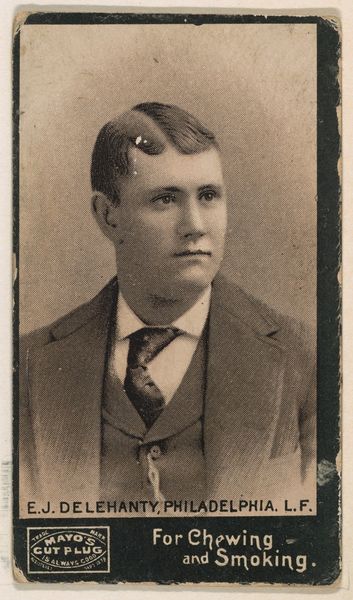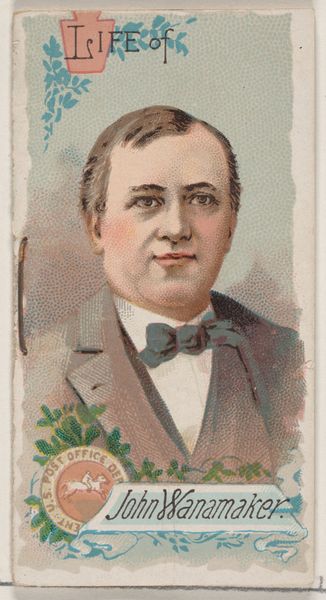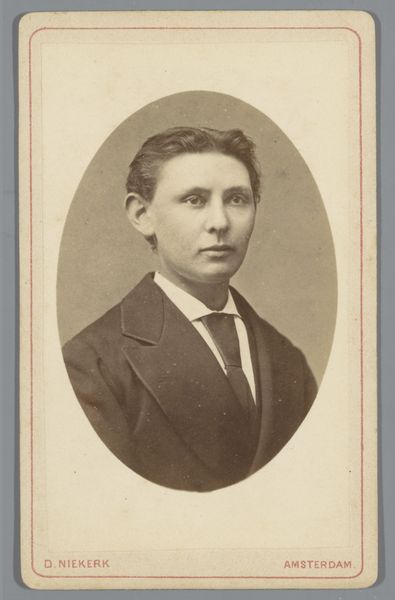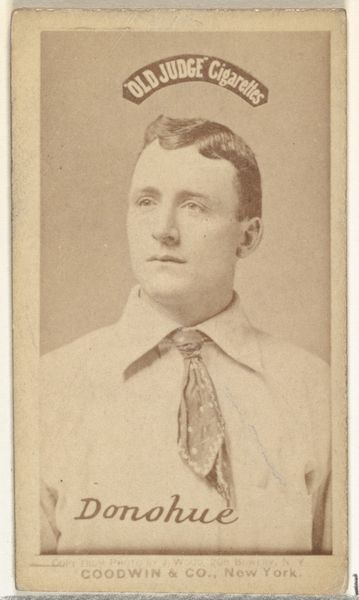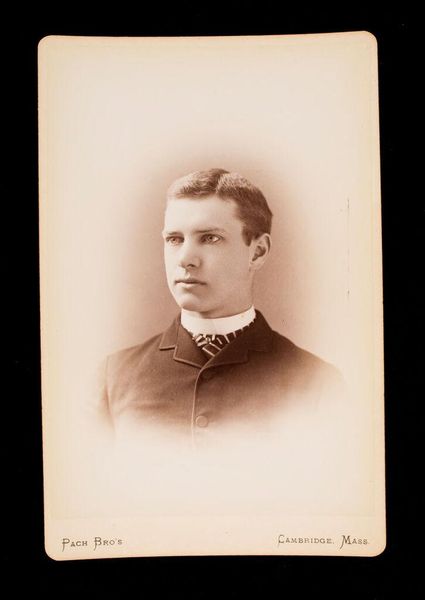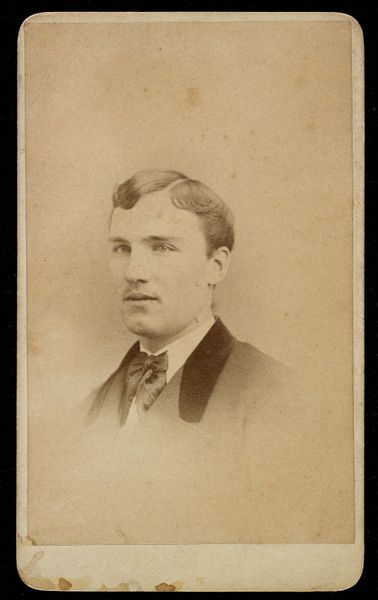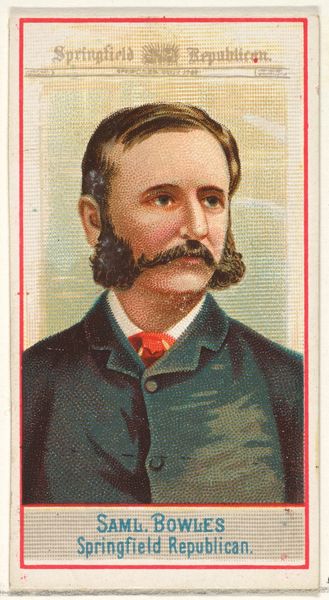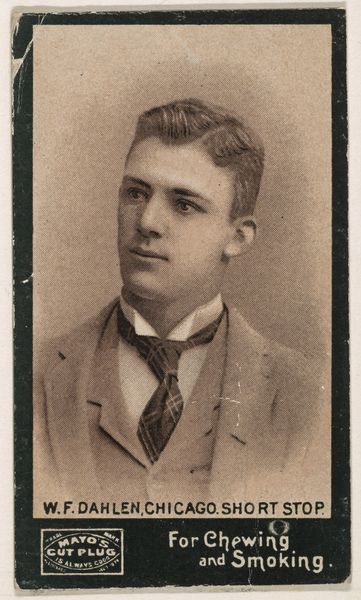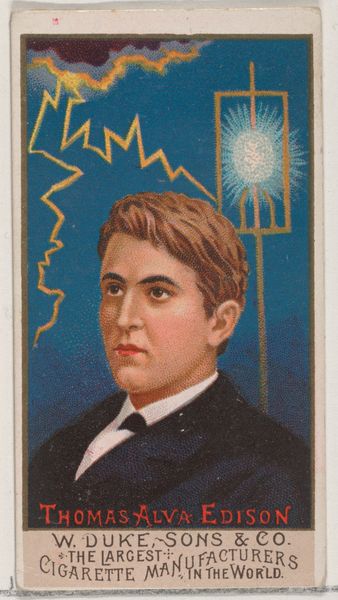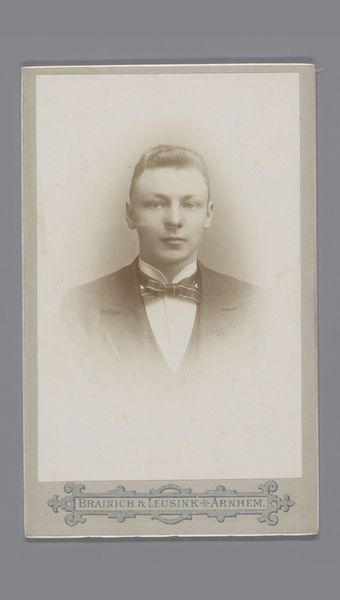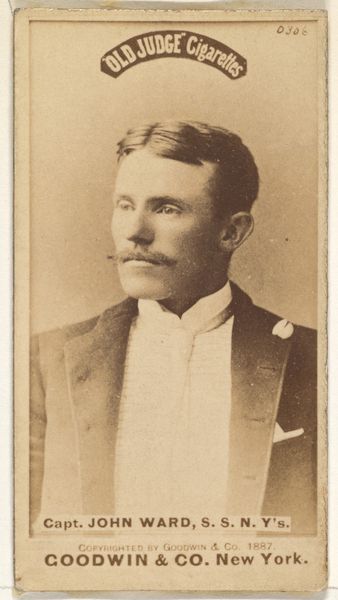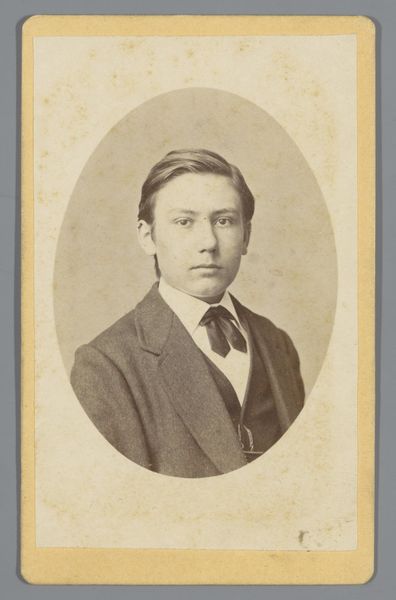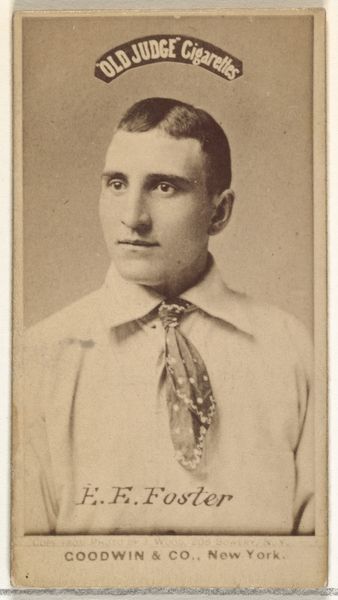
History of Thomas Alva Edison, from the Histories of Poor Boys and Famous People series of booklets (N79) for Duke brand cigarettes 1888
0:00
0:00
drawing, print, paper, pencil
#
portrait
#
drawing
# print
#
paper
#
pencil
#
history-painting
Dimensions: Overall (Booklet closed): 2 3/4 × 1 1/2 in. (7 × 3.8 cm) Overall (Booklet open): 2 3/4 × 2 7/8 in. (7 × 7.3 cm)
Copyright: Public Domain
Editor: Here we have a printed card from 1888, part of a series of promotional booklets for Duke brand cigarettes. It depicts Thomas Edison. I find it so fascinating how these small everyday items try to capture the legacy of famous figures. What do you make of it? Curator: It's more than just capturing legacy, it’s about constructing it, really. Consider the social context: this was a time of immense industrial growth and burgeoning consumer culture. This image doesn’t just show Edison; it sells an idea: the 'poor boy' achieving greatness through ingenuity. What ideology is being reinforced by framing Edison's history in this way? Editor: Well, the American dream, maybe? This idea that anyone can achieve anything if they work hard enough? Curator: Precisely. And who benefits from the propagation of that myth? Think about labor conditions at the time, the immense wealth disparity. This image normalizes that, doesn't it? By focusing solely on Edison's individual achievements, it obscures the exploitation inherent in the industrial system he was a part of. Who isn't in this picture, and whose labor made Edison's success possible? Editor: That’s a good point. We see Edison the individual, but not the workers in his factories. This image really highlights how even seemingly innocuous commercial art can promote particular narratives. Curator: Exactly. And that's why it's so important to critically examine the images we consume. It is so easy to focus solely on the surface and neglect the underlying power dynamics. Editor: It's given me a lot to think about in terms of visual language and cultural messaging. Thanks for pointing out what this portrait is intentionally communicating, and unintentionally obscuring. Curator: It's a pleasure! The real power of art history lies in using it to see our present with new eyes.
Comments
No comments
Be the first to comment and join the conversation on the ultimate creative platform.
